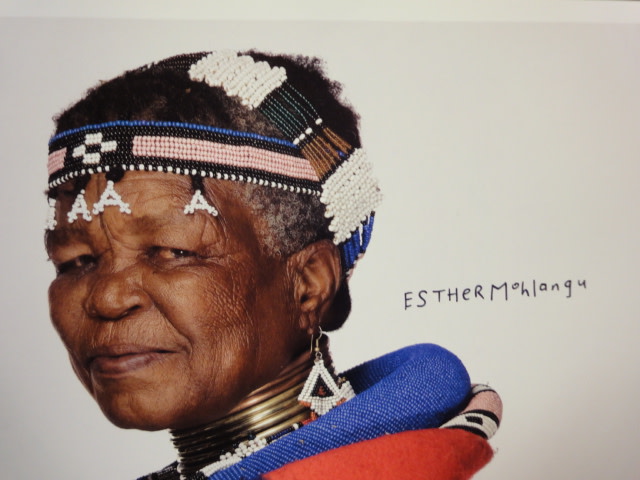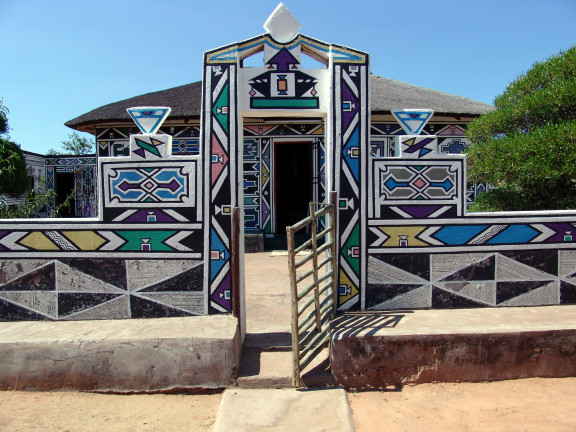
South African Artist Esther Mahlangu
‘IsiNdebele is my culture and I love it. I speak IsiNdebele, I walk IsiNdebele and I wear IsiNdebele.’
– Esther Mahlangu
Born on a rural farm in the Mpumalanga Province of South Africa in 1935, it was Esther Mahlangu’s destiny to be the first of six children born to her family. For as tradition dictated, her grandmother and mother were tasked with teaching her the skills of Ndebele wall painting and beadwork. Esther was trained in this artform from around the age of nine years old and recalls that she felt an instant rapport with painting. ‘My mother and grandmother were very inspiring to me and soon it was all I wanted to do, so much so they couldn’t keep me away from painting, no matter what duties or chores I had,’ she recalls. And so, it was Esther’s natural talent and expert execution of these murals, combined with a passion for the art form, that would spawn a deep and lifelong commitment to preserving this spectacular artform.
The Ndebele are an ethnic group found throughout South Africa’s Gauteng and Mpumalanga provinces and comprise distinct and melodic Southern Ndebele and Northern Ndebele dialects. Not to be confused with the Ndebele people of Zimbabwe or Botswana, who speak a different language but bear the same name, South Africa’s Ndebele have long used art as a means to reinforce their cultural identity. The artform’s ability to combine external sources of stimulation with traditional design concepts borrowed from their ancestors is an undoubted part of its success. For stylistically, Ndebele art’s fascination with linear elements in the environment is then eloquently depicted in a bold and graphic sequence of patterns, shapes and motifs.
Traditionally, the Ndebele technique of wall painting was done by a bride to her new home. Once the house had been finished in cow dung, the walls would be decorated with designs rendered in coloured clay. ‘Painting was important in the Ndebele culture because the community could tell by the paintings how well the wife was raised,’ she explains. Esther’s childhood in the 1940s saw the introduction of modern paints and that in turn led to the colourful geometrical shapes that now define Ndebele art. It was these influences which would serve to inspire her work later in her career.

Although grounded in the Ndebele tradition, Esther’s art has long represented ordinary, every-day objects in the abstract, drawing freehand and without prior measurement or sketches. During the course of her career, she evolved on the traditional designs and techniques and widened her horizons to contemporize her work as she transposed it onto everything from canvas to cars and even buildings. This in turn, popularized her work and the tradition of Ndebele art.
‘I realized that just as I had been given the privilege of becoming a custodian of these skills from my grandmother and mother, that I too wanted to pass them on to generations after me,’ explains Esther. ‘It became important for me that people should know where Ndebele art comes from, why we paint our houses in this way and how our traditional paints were mixed from soil etc.’
As supporters of African Art & Design we salute this living legend and applaud the University of Johannesburg for bestowing her with an honorary doctorate degree in recognition of her ‘legacy as a cultural entrepreneur who has skillfully negotiated local and global worlds and played a major role as an educator.’
To see the the art work of the Ndebele tribe first hand, contact welcome@roarafrica.com



